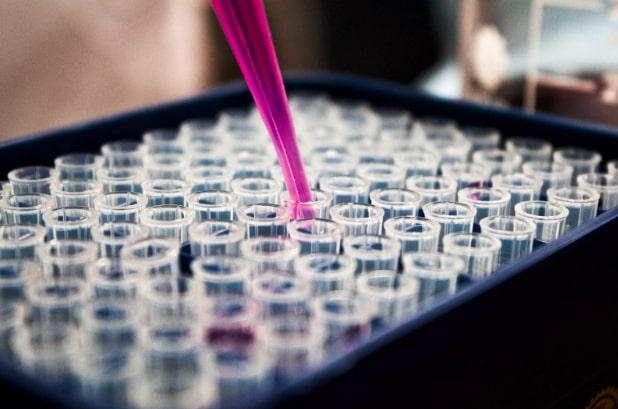
Image Source:- Pexels
It might be difficult to keep track of laboratory inventory orders, especially when several procedures succeed one another. When laboratories utilized clipboards with pencils hooked to them to track orders, it was a massive task. Even with an Excel spreadsheet, it is quite challenging to maintain accurate track records.
Management of a lab is not possible without effective inventory management. Inventory control must be kept up if compliance, outcomes, accuracy, and patient safety are to be maintained.
Lab inventory management entails a few things. You should easily know where all the samples are located and if the lab equipment is properly calibrated. Not to mention that you should track the lab supplies as well.
Imagine how hard your life will be if you’d manually track all the records of multiple lab equipment and tons of lab supplies. It sure is a nightmare in the making!
Thankfully, there are a lot of digital software and tools that could help inventory managers track all these things at once. But will digitizing lab inventory management really make a difference? Let’s find out!
Inventory Management: What Is It and Why Is It Important?
Supply chain management includes inventory management. The objective is to keep the proper stock of products to make sure that no one runs out of supplies while performing their duties. Additionally, analyzing and projecting demand based on ingredient use, avoid overstocking and understocking.
Lab inventory management also entails making sure that the equipment is calibrated and working properly. Additionally, it simplifies every process and boosts lab professionals’ output, saving you time and money.
Effective laboratory inventory management is more important than many would think. Since laboratories deal with a lot of chemicals and substances, everything must be kept in order. In fact, there are laws regarding laboratory supply storage and overall lab cleanliness to avoid cross-contamination that might pose a potential threat or harm to the public.
Thus, it is of utmost importance that each laboratory has reliable and accurate inventory management to avoid such issues.

Image Source:- Unsplash
Why Digital Laboratory Inventory Management Is Essential
Every laboratory operates more effectively when inventories are managed. It makes it much simpler to track inventory orders, improves inventory management, saves you time, and helps your lab better control expenses, among other advantages.
Let’s know more about them.
1. Real-Time Inventory Tracking
Solutions for managing lab inventory save information in a safe cloud bound by HIPAA laws and enable authorized users to view it immediately when it is automatically entered. They are able to see how many lab supplies and samples are present in a lab or warehouse as a result.
Sample loss, inventory shortages, and excess inventory are less likely as a result of this feature. Additionally, real-time inventory tracking enables you to keep an eye on the entire lab workflow in real time.
2. Automated Data Entry and Updates
Your staff’s time-consuming and error-prone data entry tasks when cataloging laboratory inventory are decreased when your lab inventory software is used in conjunction with barcode readers or QR-code scanners.
The integrated solution eliminates the need to manually fill out any spreadsheet columns by automatically entering all information about an item into your lab inventory management system after scanning its tag.
3. Automatic Supply Alerts and Reminders
With the help of digital lab inventory systems, you may establish alerts for when supplies are running low. This way, you can quickly order more supplies and keep your lab’s operations moving forward. With an automatic notification system like that, you will never worry about the availability of your lab supplies as it is certain that there will be stocks all the time.
4. Forecasting Demands
Since you can see the available stocks in a digital laboratory inventory management tool, it could discover your supply consumption trends and utilize them to forecast future demand for that specific supply.
5. Equipment Scheduling
With digital laboratory inventory, the managers and employees could easily see which equipment is being used and which ones are free. These digital software tools also let them see the queue for the said equipment so that they could adjust their task schedule accordingly.
6. Maintenance Appointments
You may keep track of things that require maintenance using your digital inventory management system based on their present condition and the manufacturer’s recommendations.
When a piece of equipment needs maintenance, an app notifies you and designates trustworthy maintenance personnel to handle the job. By doing this, you may save your equipment from needing expensive repairs and increase its longevity.
Best Practices in Managing Lab Inventory
→ Assign Minimum and Maximum Stock Levels
Even if you have digital lab inventory management tools, it still needs user inputs to function properly. Thus, when you are entering data into the software, it is best practice to also include a minimum and maximum stock value in your inventory.
For instance, if you assign a minimum value, your digital tool will send an alert that you are running out of stock for that specific item when that minimum value is reached. This way, it doesn’t necessarily need to have 0 stocks before restocking.
In the same manner, assigning maximum value to a product will mean that the product isn’t used in the lab as much as the other materials. The digital software tool will let you know not to get as much next restock.
→ Create Inventory Procedures for Employees
Protocols for carrying out each task may be included in your lab’s procedures, which may also delegate them. All members of your team should have access to this written document, which is best made available online.
You may outline a step-by-step process that scientists and researchers should adhere to. It may include the equipment used for the research as well as the precise location of each piece of equipment. It helps to keep everything organized in this situation.
→ Maintain Laboratory Equipment
Reducing waste and the expense of repairs or replacement is achieved by maintaining your equipment. Additionally, it makes working in your laboratory safer.
Final Conclusion
A modern laboratory must have lab inventory management software. Businesses that already utilize it gain advantages from automated data entry, real-time inventory tracking, demand planning, and forecasting, scheduling equipment maintenance, and audit procedures.
Thus, it’s about time to invest in one too!

![Best Way To Choose An SSL Certificate [Quiz To Find Out The Best Recommendations] Best Way To Choose An SSL Certificate [Quiz To Find Out The Best Recommendations]](https://www.techpcvipers.com/wp-content/uploads/2020/05/SSL-Dragon-180x180.jpg)

